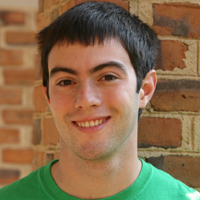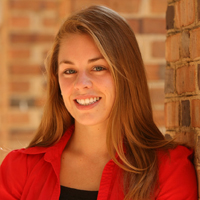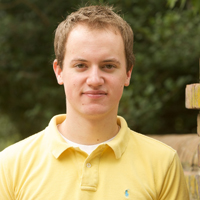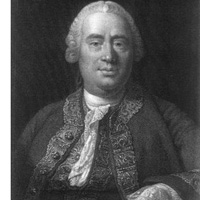Dintersmith Fellows explore many different worlds
Daniel Villareal is testing the controversial communications chasm between mathematics professors and their students, a divide some educators claim really isn't there.
Jennifer Garrott’s film will teach students in Prince William County _ and maybe beyond _ about an all-but-forgotten battle of the Civil War, a bloody encounter that took place in their backyard.
Megan Shuler is investigating how people lived 20 centuries ago in Pompeii and the Egyptian village of Karanis. What you’ve read about those times, and what actually occurred then, may not be the same.
Tyler Stukenbroeker is taking a former William & Mary student’s procedure for turning plastic into silver and making it better. Sounds so simple. It’s not.
Dina Abdel-Fattah is examining the aftermath of civil wars in Bosnia-Herzegovina and Lebanon. Sadly, it appears, reconciliation is no closer in those two countries now than it was 14 and 19 years ago, respectively, when the international community imposed power-sharing agreements that ended the fighting but not the conflict.
And John Gay is probing whether it’s possible for science to explain morality. More intriguing, can science explain morality away?
These six students are Dintersmith Fellows, selected to participate in a program designed to support undergraduate honors research, especially pre-honors research conducted in the summer before the students’ senior year. Thanks to Ted Dintersmith, ’74, students and their faculty mentors receive a stipend in exchange for working 10 weeks together on in-depth investigations. Not long before graduation this spring, the students will present not only their written theses but also an oral defense of their findings in front of a faculty panel.
"The Dintersmith Fellowship captures the elements we value most here," said Joel Schwartz, director of William & Mary's Roy R. Charles Center. "It combines the teaching and research missions of the College; they're brought together as one. . . Until now, students would start their fall with their honors thesis looking at them. They'd had no chance to gather data, do interviews, undertake research. The fall term would get going and they'd have four or five classes. The idea behind the Dintersmith is to allow them to hit the ground running on their projects by allowing them to begin them the summer before senior year."
Approximately 50 students applied for 2009 Dintersmith Fellowships, which are chosen by a neutral committee of faculty members.
"As you can see, with a 10-to-1 ratio of proposals to funding, we've got lots of room to grow," said Schwartz, whose ultimate goal is to increase the number of recipients to 20.
The class of 2009:
WHEN THE WORDS DON'T ADD UP
Dan Villareal (Linguistics, advisor: Anne Charity Hudley, Associate Professor of English and Linguistics), faced a couple of prickly problems before he even got started: was the communication gulf between students and their math professors really as wide as it has been made out to be? And, was it more particular to William & Mary than to other colleges?
The answer to the first is yes. The answer to the second is no.
“All across America, there are people with complaints,” said Villareal, who is from Newark, Del. “Nine state have passed legislation mandating English proficiency for college professors at state-(supported) colleges.
“As far as how big is the problem? Is it the Number One problem impeding math education? Absolutely not. The highest problems are formed years before the college level. And some college professors will tell you that complaints about a professor’s lack of English proficiency are just surface representations of a reticence to learn math.Villareal spent the summer at California-Berkeley's Summer Linguistics Institute. After discussions with a half-dozen professors there, he mapped out a strategy.
 In late September, he formed three groups totaling 160 students: a control group, a training group and a bias group. Each was shown a short video of a math problem, followed by two questions to solve. Afterward, they were given a short questionnaire.
In late September, he formed three groups totaling 160 students: a control group, a training group and a bias group. Each was shown a short video of a math problem, followed by two questions to solve. Afterward, they were given a short questionnaire.
The control group saw nothing but the lesson and the problems. No mention was made that the professor dictating the lesson had a foreign accent.
The training group received some “accent training” between the first assessment and the second lesson.
The bias group wasn’t shown the video until they had read several newspaper stories focused on a problem in the United States with linguistics, that as much as education costs, students deserve professors proficient in English.
His hypothesis was that the training group would perform significantly better than the control group, which would perform significantly better than the bias group. The bias group would be impeded from learning the math even though the material they read before viewing the video had nothing to do with mathematics.
“Some questions will inevitably arise,” he said. “Can these student legitimately not understand math? Or does the bias group, once they hear an accent, shut their ears before the lesson even starts?”
A NEW ANGLE ON AN OLD WAR
Jen Garrott (History, advisor: Sharon Zuber, Visiting Assistant Professor; Director of Writing Resources) spent much of her summer traipsing the bloody fields of history, interviewing and filming site managers, historians and re-enactors at Manassas Battlefield, Ben Lomond and Bristoe (now Bristow).
In October 1863, several months after the epic three-day battle of Gettysburg, Confederate General Robert E. Lee attempted to cut off the Union from its supply base in Centreville by attacking the right flank of Union troops commanded by Gen. George Meade. But Meade figured out the strategy and led Lee on a five-day chase that ended at Bristoe Station, a railroad stop between Orange and Alexandria.
Lee sent Lieutenant General A.P. Hill after Meade. What turned out to be an impetuous and ill-fated decision by Hill resulted in two brigades from North Carolina charging headlong into a barrage of waiting rifle and cannon fire. Confederate casualties numbered more than 1,300. The next day, as Hill and Lee rode the battlefield and surveyed the human carnage, Hill attempted to explain his lack of strategy. Lee would have none of it, instead gently commanding the young officer to, “bury these poor men and let us say no more about it.”
“There’s a lack of documentation of what happened there,” said Garrott, who is from Burke, Va. “It occurred in the shadow of Gettysburg.”
Alone, the story of Bristoe could be daunting. But Garrott is also exploring the nearby Brentsville Courthouse – where men enlisted into the Confederate army _ and Ben Lomond.
Originally constructed in 1832, Ben Lomond was used as a hospital by Confederate forces following the battle of first Manassas in 1861. It was lost to the Union, whose soldiers scribbled messages on the house walls that remain to this day.
“The medical and disease aspects of the war have been grossly overlooked,” Garrott said. “Most people don’t know that disease killed more soldiers than bullets.”
When she is done, Garrott will have produced a 30-minute documentary, broken into 10-minute segments, that she hopes Prince William County schools will use in their classrooms.
“Kids don’t want to sit and read,” she said. “But maybe they won’t mind watching history on video. Maybe I can excite them to learn history through film.”
THE WAY THEY (REALLY) WERE
Megan Shuler (Classical Studies, advisor: Molly Swetnam-Burland, Assistant Professor of Classical Studies) is of the opinion that early excavations of Roman Empire-era domestic sites have misrepresented the lifestyle of citizens because they were focused on certain elements such as plaster casts and paintings, even hordes of gold. Some of what was excavated wasn’t even catalogued, yet we’ve labored under the misimpression that we know how those people lived.
Shuler, from Hudson Falls, N.Y., isn’t alone in that feeling, which has spawned a new, more inclusive, method of archeology mere decades old. Meanwhile, an accompanying problem, Shuler argues, is that we have taken as fact articles based on those early, flawed findings.
“Literary sources tend to be easier to deal with,” she explained. “Somebody is saying something, and you can take them at their word . . . It’s a little more difficult to say, ‘I have this huge collection of things, what did they mean to the people who used them.’ “
Shuler has dubbed her project “Relicta,” and she is studying and comparing houses in Pompeii, Karanis in Egypt and, possibly, in England. That, she suspects, will enable her to get closer to the real lives of real people.
Take Pompeii. The traditional view is that of a lively, vibrant city noteworthy for its amphitheatre, centrally located natatorium, and aqueduct that provided water for more than 25 street fountains, at least four public baths and a large number of private houses and businesses. At its height, Pompeii could have had as many as 20,000 residents and enjoyed a secure place as vacation site for wealthy Romans who owned retreats there. That’s before 79 AD, when the city was buried and lost for 1,300 years from the eruption of Mount Vesuvius.
 Shuler has chosen three houses in close proximity to one another; one very large by the standards of the day and two smaller houses that were essentially located on the same block. The large house, she says, “tends to fit more with the idea that we have from literature that life was all about the Roman ideals and showing off.”
Shuler has chosen three houses in close proximity to one another; one very large by the standards of the day and two smaller houses that were essentially located on the same block. The large house, she says, “tends to fit more with the idea that we have from literature that life was all about the Roman ideals and showing off.”
We know that elite houses were built with atriums, or large halls, where tradition tells us that Romans displayed busts of their ancestors and entertained guests they were trying to impress. But Shuler’s investigation into newer research has revealed that there were no upper-class neighborhoods in Pompeii, that the largest houses were mixed in with small houses and businesses, that parties and ostentatious displays of wealth weren’t foremost in the minds of most citizens.
“That wasn’t the only thing going on and it probably wasn’t the most important,” she said. “You find industrial activities in these halls, looms _ people are weaving in there. To me, that makes sense because that’s the area of the house that has the most light. But you wouldn’t know that until you looked at all of the artifacts.”
Not only that, but Shuler says there wasn’t as much difference in large houses and small and therefore, perhaps, less difference in lifestyle than is probably right.
“But the other houses, less elite houses, have (atriums), too,” she said. “They might not have called it an atrium, might not have thought of it in the same way, but they were positioned in the same place by builders and they functioned the same way.”
FINDING THE SILVER LINING
Tyler Stukenbroeker (Chemistry, advisor: David Thompson, Chancellor Professor of Chemistry) spent the summer of 2008 working with fellow W&M student Luke Davis on the metalization of polymers. What’s that mean? Take the inside of a potato chip bag. The shiny stuff? That’s aluminum that’s been sprayed onto plastic and it’s easy to do.
Now try to spray silver onto that same plastic. It rubs right off.
The traditional process is to “dope” a polymer with silver ions in a solution. When the doped polymer is “cast” as a flat sheet, the solvent evaporates and leaves a sheet of plastic that looks like an overhead slide. The silver is imbedded in the plastic as a colorless ion. The easiest way to turn that plastic sheet into silver is to heat it at 300 degrees. The silver ions migrate to the surface, leaving a reflective polymide with all the properties of the polymide.
Davis pioneered a mechanism for his project that worked at room temperature, but . . .
Davis used an acidic compound, Trifluoromethanesulfonate, during the silver-mixing process that might degrade the finished product later. Considering that some of the potential uses for this product are micro-circuitry, intravenous tubes (made this way, they’re biocidal, killing bacteria), and lightweight satellites that would be cheaper to manufacture and easier to send into space, durability is crucial.
“It’s no good if it has to be done under all these specific conditions in a lab,” said Stukenbroeker, who is from Fairfax, Va. “We’ve got to make it easy. We’ve got to make it cheap. So we’re all about tinkering with it.”
 Stukenbroeker dissected the process Davis initiated and came up with several points he wished to improve. First and foremost, he said, was switching from the acidic compound to something without an acidic background that still would enable him to coax the silver into the polymer. The other area of concern was conductivity, a tricky quality to measure.
Stukenbroeker dissected the process Davis initiated and came up with several points he wished to improve. First and foremost, he said, was switching from the acidic compound to something without an acidic background that still would enable him to coax the silver into the polymer. The other area of concern was conductivity, a tricky quality to measure.
Starting with 60 samples, Stukenbroeker found a non-acidic solution that worked at room temperature: Hexafluoromethanesulfonate. Using some of the world’s most ultra-sophisticated equipment at the Jefferson Lab in Newport News, he analyzed the product’s conductivity “and it works great.” While at the lab, he also used a Transmission Electron Microscope belonging to Old Dominion University to analyze the product “and it looked really good.”
There remains at least one problem, bringing all of the silver to the surface. He’s experimenting with a variety of chemicals to rectify that. It’s exacting, often ponderous, work.
“There was no ‘wonderful’ moment,” Stukenbroeker said when asked about his reaction to the non-acidic compound working. “I wish I could say that there was. In this field, though, we don't have a singular goal we're trying to achieve. It's a long process of characterizing the films to make sure they will satisfy your requirements and conceive applications for them. Fortunately, I haven’t had too many setbacks.”
THE LONG, SLOW ROAD TO GOVERNMENT FOR ALL
In 1995, the Dayton Peace Agreement brought an end to a 3½-year civil war in Bosnia. Emerging from a complicated, multi-tiered maze of governments were two ruling entities: the Federation of Bosnia and Herzegovina, which covers 51 percent of the land, and the Republika Srpska, which covers the other 49 percent.
Within those two areas, almost 90 percent of Republika Srpska was controlled by the Bosnian Serbs, about nine percent by Bosnian Croats and about 1.5 percent by Bosnian Muslims. In Bosnia-Herzegovenia, about 41 percent was controlled by Bosnian Croats, about 53 percent by Bosniaks (Bosnian Muslims), and about six percent by Bosnian Serbs.
A power-sharing system in which Bosniaks, Bosnian Serbs and Bosnian Croats all had a hand in government was implemented, using quotas.
The Organization for Security and Cooperation in Europe (OCSE) and non-governmental organizations predominate the work force, when it comes to reform being done in the country. The former concentrates on governmental and educational reform and is composed mostly of international actors, with some local participants. In its broadest sense, the latter, composed of Bosnian-Herzegovinians, work on things like civil-service projects.
Dina Abdel-Fattah (International Relations, advisor: Paula Pickering, Associate Professor of Government) isn’t as concerned with the dynamic between the two actors as she is the work they’ve done toward the power-sharing agreement, and some of the inevitable issues that have arisen. She is bundling her findings with similar research she had performed the previous year on governmental in Lebanon to form a comparative study.
Internationally-imposed, power-sharing structures of government are effective at ending civil war. But do they represent a long-term solution to ethnoreligious conflict? Do they promote reconciliation?
The answer appears to be no.
Last summer, Abdel-Fattah traveled to Bosnia where she conducted interviews with representatives of both international and non-governmental organizations, conversations that continue today via e-mail and Skype.

“Both sides see a need to fix the governmental structure.” she said. “At the same time, what is the mechanism for doing this? There’s no set formula. Even within international organizations it’s different, and even within domestic organizations, it’s different.”
“Common denominators,” a term frequently heard during her OCSE interviews, seems to be the most-offered possibility. “It’s like, ‘We can’t please all of the ethnic groups, but if we can find something that works for all of them, at least minimally, then that’s a step in the right direction,’ ” Abdel-Fattah recalled.
But finding common ground assumes that the previously warring factions, particularly the elites of each, are committed to working together.
That hasn’t been the case in Bosnia-Herzegovinia.
The country continues to struggle with a host of highly complex issues that call into question whether the forced post-war introduction of democracy wasn’t horribly premature. But, Abdel-Fattah has discovered, it’s also true that the parties in control in this consociational agreement have shown no inclination to relinquish any power in pursuit of a common good.
“Consociational agreements shouldn’t be in place for (so) long because you don’t end up creating a unified society,” she said. “There’s always going to be friction. When (they) go to the polls, (they) have to identify as a Bosnian-Serb, (they) have to identify as a Croat because it’s in (their) best interest. That shouldn’t be. Their vote should be predicated on, ‘What does the government do for me?’ ”
THE SCIENCE OF MORALITY
John Gay (Philosophy, advisor: Paul Davies, Professor of Philosophy) wondered if science could explain the origin of morality. Could it also explain morality away?
The Blacksburg, Va., resident concentrated largely on the so-called “is-ought” distinction, which claims that is there is a fundamental and logical divide between sentences containing descriptive terms and sentences containing evaluative terms.
For example: “Jones has promised to pay Smith five dollars,” and “Jones ought to pay Smith five dollars.”
The first is a statement of fact, descriptive of a communications exchange between two people. The second is a moral pronouncement, an evaluative claim.
“If science is to have a robust relationship with morality, one in which it has the power to explain away or even verify moral intuitions, we need the ability to make inferences from descriptive claims (which is the only thing science presently deals in) and moral claims (required for moral conclusions),” Gay blogged recently.
Gay examined numerous attempts by modern thinkers to bridge the “is-ought” gap. He found all of them wanting because they introduce evaluative language into their argument without a factual basis – yet claim to have made expositions of purely analytic truths.
He doesn’t believe that science should be allowed to make that leap, which leaves science in a precarious position when it comes to morality.
Science must either refrain from making evaluative conclusions – Jones ought to pay the five dollars – or concede that evaluative conclusions are born out of presuppositions that it cannot substantiate.
Acknowledging that presuppositions exist allow science to make completely valid “is-ought” claims, but they defeat the fundamental purpose of science – unadulterated, unmitigated proof that something is.
Gay takes his argument another step, saying, "Is-ought inferences are impossible unless the oughts are presupposed, so no facts would have a bearing on moral claims, not just scientific facts."
But Gay also knows that science isn't about to be dismissed so easily.
Without an “is-ought” progression, must we conclude that all morality emanates from presupposition? And, if so, couldn’t science help us understand why we prescribe so much value on evaluative claims?














